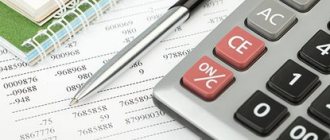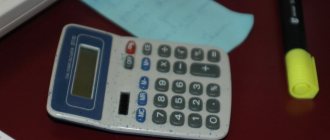Difference between current and non-current assets
Both non-current and current shares are used by the enterprise to generate income. The difference between them lies in how and for how long the property is used.
As mentioned above, non-current assets are property that is involved in the production process for more than one year. Its cost is included in the cost of finished products in parts. According to the Accounting Regulations No. 6/01 and 14/2007, as well as Order of the Ministry of Finance No. 66n, non-current assets include buildings, transport, production equipment, financial investments, development results, and other non-current assets.
Current assets include property that is directly used in the production process. Their cost is initially included in the cost of finished products. This category includes goods, materials, cash, and deposits.
Accounting for non-current assets at an enterprise
To account for operational movements, a separate account is provided for each group of non-current assets by order of the Ministry of Finance dated October 31, 2000 No. 94n and rules for their reflection are given.
Let's look at each group of non-current assets in more detail.
invites you to a free webinar on how primary reporting can save your company from claims. You can sign up right now.
Accounting of intangible assets
Intangible assets are a long-term asset (with a useful life of more than 1 year) without a tangible form, used by an enterprise to obtain financial benefit. Accounting for intangible assets is regulated by PBU 14/2007.
- Intangible assets are reflected in accounting at cost, which includes the amount of costs incurred for its production, acquisition and other associated costs.
- The organization also needs to determine the expected period of use of the asset, which may be equal to the period of the contract concluded for its use or the expected period of income, but not exceed the life of the enterprise itself.
- It is also possible to account for intangible assets with an unformed period of use; in this case, according to clause 23 of PBU 14/2007, depreciation charges are not made on it.
The estimated service life of intangible assets should be examined every year for the need for revaluation. This need is indicated by clause 27 of PBU 14/2007.
To reflect intangible assets, the following entry is entered into accounting: Dt 04 Kt 08.
Depreciation charges for intangible assets can be made using one of the three existing methods described in PBU 14/2007. Accruals are made from the beginning of the next month after the asset is accepted onto the balance sheet and continue until it is written off or the entire cost is repaid.
To reflect depreciation in accounting, the following entry is used: Dt 44 (20, 23, 25, 26) Kt 05.
When an intangible asset is disposed of, all depreciation accrued during its use is transferred to the general account “Intangible assets”: Dt 05 Kt 04.
Next, the residual value of the asset is determined and it is written off from the enterprise’s balance sheet by posting: Dt 91 Kt 04.
OS accounting
The conditions for accepting an asset as a fixed asset, as well as the rules for their accounting, are described in PBU 6/01. This category includes:
- building,
- equipment,
- devices and instruments used in work,
- vehicles,
- livestock,
- household equipment and other objects.
From 2022, PBU 6/01 will no longer be in force. It will be replaced by FSBU 6/2020 “Fixed Assets” and FSBU 26/2020 “Capital Investments”.
Fixed assets are recorded in accounting at their original cost, which can subsequently be revised, but not more than once a year (clause 15 of PBU 6/01).
To accept fixed assets for accounting, it is necessary to determine their future period of use. This is done on the basis of the Classification of fixed assets introduced by Decree of the Government of the Russian Federation dated January 1, 2002 No. 1.
The cost of fixed assets is entered into accounting with the entry: Dt 01 Kt 08.
To calculate depreciation, a credit from the “Depreciation of fixed assets” account is used, corresponding to the accounts that record sales or production costs: Dt 44 (20, 23, 25, 26) Kt 02.
To carry out the disposal of fixed assets from the balance sheet, the current instructions to the Chart of Accounts provide for the possibility of creating subaccount 1 “Disposal of fixed assets” to the main fixed assets account. In this case, the following records are created: Dt 02 Kt 01.1, Dt 91 Kt 01.1.
Accounting for profitable investments in materiel
Assets in the form of income-generating investments include property acquired for the purpose of obtaining economic benefits from providing it for temporary use (PBU 6/01).
A record of profitable investments is made on account 03 at their actual cost by accounting entry: Dt 03 Kt 08.
To reflect depreciation, account 02 is used: Dt 44 Kt 02.
Accounting for the write-off of income-generating investments from the balance sheet is carried out similarly to fixed assets. The only difference is that instead of account 01.1, account 03.1 is used: Dt 02 Kt 03.1, Dt 91 Kt 03.1.
Accounting for financial investments
The group of financial investments includes long-term investments in various income-generating assets (money market securities, authorized capital of enterprises, etc.). The basics of accounting for financial investments are regulated by PBU 19/02.
Financial investments are reflected as follows: Dt 58 Kt 52 (50, 51, 75, 76, 80, 91, 98).
The corresponding account depends on the method and means of mutual settlement.
The disposal of assets recorded on account 58 is recorded as follows: Dt 91 Kt 58.
Detailed composition of non-current assets
The value of non-current assets is more than fifteen salaries before taxes. The minimum bet is taken into account. These include the following objects:
- funds that the enterprise received from its main activities;
- intangible assets;
- devices and equipment;
- unfinished construction projects;
- long-term investments.
This list is incomplete. Let's take a closer look at each category. Tangible assets may include land, vehicles, commercial equipment, property that is transferred to another person under a leasing agreement, and buildings.
Financial non-current assets include shares purchased to receive dividends, various types of investments, and loans. Intangible items include software developed directly by the company, a database, a license to perform certain works, and patents.
Regardless of the object, its period of use must be more than one year. If the service life is shorter, the property must be classified as current assets.
An example of calculating the amount of line 1190 of a balance sheet asset
Let's give a simple practical example of calculating the amount on line 1190.
Vasilek LLC bought the trademark for 400,000 rubles. VAT is 66,666.67 rubles and is included in the total amount. To formalize the transaction, documents were collected and submitted to the appropriate authority. In this case, costs were incurred in the amount of 5,000 rubles. Registration did not finish until the end of the year.
We present the calculation in the table:
| Wiring | Explanation | Sum |
| D 08 K60 | Expenses that the company incurred during the purchase | 333333,33 |
| D19 K60 | VAT accounting | 66666,67 |
| D68 K19 | VAT to be reduced | 66666,67 |
| D08 K76 | Accounting for registration costs | 5000,00 |
Thus, the amount of other non-current assets is:
333333.33 + 5000.00 = 338333.33 rubles. This amount must be entered in line 1190.
List of functions of non-current assets
Non-current assets are used to ensure the activities and subsequent development of the enterprise. There are several main functions:
- obtaining financial benefits in the future;
- provision of management needs;
- support for uninterrupted production and transportation of goods;
- improving the quality of manufactured products;
- the opportunity to make settlements with creditors is provided.
The dynamics of this indicator in the financial statements allows you to evaluate the development of the enterprise and draw a conclusion regarding the prospects.
Strengths and weaknesses of non-current assets
The advantages include the following:
- reducing dependence on inflation;
- obtaining a stable profit;
- losses associated with the sale of goods and their storage are compensated;
- the sales market increases at the expense of its own resources;
- production volumes increase.
Non-current assets are, in other words, a reliable reserve that allows you to survive difficult times. But they are not without their disadvantages, including:
- during downtime of any kind, the previous value is lost;
- complexity of management;
- a decrease in the level of liquidity, which prevents the use of this type of assets as sources of payments.
Regardless of the shortcomings, this type of asset should be formed at all large business entities.
Reflection of non-current assets
Non-current assets are reflected in financial statements - a commodity accounting program or paper documents. Recorded using accounting entries. Line 08 indicates “Investments in VA”. The complete type of wiring depends on the operation.
Let's look at an example. The company built a warehouse to store finished products. This building is classified as VA. The debit is reflected as 08 “Investments in VA”. There are many costs incurred during the construction phase that are taken into account against the loan. It can be:
- “Settlements with creditors” - 76 account;
- “Materials” - count 10.
Situations may arise when non-current assets end up in the loans column. They are recorded only in cases where the construction phase is completed. The debit will reflect 01 “Fixed Assets”. In other words, the funds received from commissioning are directed to the main revenue of the company.
What do intangible assets of organizations consist of?
Intangible assets, according to PBU 14/2007, approved by Order of the Ministry of Finance of Russia dated December 27, 2007 No. 153n, include documented rights to unique intangible objects, for example, rights to works, designs, technologies, brands (marks), reputation.
In the balance sheet they are divided:
- on NMA;
- R&D;
- intangible exploration assets that arise only in organizations engaged in the development of natural resources and can be depreciated during the process of their creation.
The cost of operated intangible assets in accordance with clause 35 of PBU 4/99 in the balance sheet is shown minus depreciation on them. Those. data on intangible assets in non-current assets consists of balances on accounts 04 and 08 (for intangible exploration assets) reduced by depreciation amounts (account 05). If the data on intangible assets listed on account 08 does not correspond to the analytics highlighted in the balance sheet, then they may be:
- added to the balances of used intangible assets when their amount is insignificant (up to 5%) compared to the residual value of intangible assets;
- allocated to an additionally entered separate line in non-current assets ;
- shown in the line “Other non-current assets ”.
In simplified reporting (Appendix 5 to Order No. 66n), it is allowed to reflect on 1 line both the residual value of operated intangible assets and existing unfinished investments in them.
The need to count non-current assets
Accounting allows you to solve the following problems:
- determine the stability of the company’s activities;
- calculate the amount of tax deductions;
- track the dynamics of development;
- calculate your own reserves.
Periodic checking of the indicators of non-current assets, as well as their dynamics, allows you to draw up a development plan and identify weaknesses. For example, if indicators decline, sources for the formation of new long-term assets must be provided.
Profitability plays a major role in the calculations; this indicator allows you to obtain information about the quality of asset management, as well as the effectiveness of their use to generate profit. An increase in profitability occurs in the presence of the following factors - an increase in the enterprise’s profit, an increase in the cost of goods/services and asset turnover, and a decrease in expenses.
Return on non-current assets is calculated by dividing net income by average cost. Net income is revenue from which all expenses have been subtracted. The operation is carried out in national currency. The result is a coefficient with which you can evaluate the efficiency of using non-current assets.
Non-current assets require long-term investment. The need for them is covered by own capital and partially borrowed funds. Those. the larger the VA, the larger the amount required to maintain them. This means that the greater should be the share of equity capital in the sources of financing the organization’s activities.
Assets
The balance sheet asset for small businesses consists of only five lines:
- tangible non-current assets;
- intangible, financial and other non-current assets;
- stocks;
- cash and cash equivalents;
- financial and other current assets.
Note! Small enterprises have the right not to calculate such indicators as deferred tax assets, deferred tax liabilities, etc. objects. This is indicated in paragraph 2 of PBU 18/02 “Accounting for calculations of corporate income tax” (approved by Order of the Ministry of Finance of Russia dated November 19, 2002 N 114n).
The line “ Tangible non-current assets ” reflects both the cost of fixed assets and incomplete capital investments in fixed assets. In this case, the balance sheet must include numerical indicators in a net assessment, i.e. minus regulatory values (clause 35 of PBU 4/99). The value that regulates the initial (current, replacement) cost of fixed assets is the amount of accrued depreciation. A similar rule applies when accounting for intangible assets.
The line “ Intangible, financial and other non-current assets ” shows:
- intangible assets;
- unfinished investments in intangible assets;
- research and development results;
- long-term financial investments;
- Deferred tax assets;
- deferred expenses, etc.
As a rule, organizations have to divide financial investments into those for which the current market value can be determined and those for which their current market value cannot be determined. Meanwhile, small businesses have the right to take into account all financial investments at their original cost. This conclusion follows from clause 19 of PBU 19/02 (approved by Order of the Ministry of Finance of Russia dated December 10, 2002 N 126n). If any costs comply with the conditions for recognition of a certain asset established by regulatory legal acts on accounting (PBU 6/01, PBU 5/01, PBU 14/2007, etc.), then they should be shown in the balance sheet as part of this asset (Letter Ministry of Finance of Russia dated November 17, 2011 N 07-02-06/220). Otherwise, such costs are reflected as deferred expenses. Then they are subject to write-off by distributing them between reporting periods in the manner established by the organization during the period to which they relate (Letter of the Ministry of Finance of Russia dated January 12, 2012 N 07-02-06/5). Deferred expenses appear in PBU 14/2007 “Accounting for intangible assets” and PBU 2/2008 “Accounting for construction contracts” (approved by Orders of the Ministry of Finance of Russia dated December 27, 2007 N 153n and dated October 24, 2008 N 116n, respectively) .
Inventory line should include not only information about raw materials and materials, but also about finished products, goods, etc. This conclusion follows from clause 20 of PBU 4/99 and clause 2 of PBU 5/01 “Accounting for inventories” (approved by Order of the Ministry of Finance of Russia dated June 9, 2001 N 44n).
The line “ Cash and cash equivalents ” shows cash balances and cash equivalents. We are talking about highly liquid financial investments that can be easily converted into a known amount of cash and which are subject to an insignificant risk of changes in value. This definition is set out in paragraph 5 of PBU 23/2011 “Cash Flow Report” (approved by Order of the Ministry of Finance of Russia dated February 2, 2011 N 11n). An example of a cash equivalent is demand deposits opened in credit institutions.
The line “ Financial and other current assets ” is intended for:
- short-term financial investments;
- accounts receivable;
- value added tax;
- other current assets not included in other balance sheet lines.
In the line “Financial investments (except for cash equivalents)” of the “Current assets” section, you should show information on financial investments whose circulation (maturity) period is no more than 12 months after the reporting date or the duration of the operating cycle, if it exceeds 12 months. This follows from clause 41 of PBU 19/02 and clause 19 of PBU 4/99. For VAT, account balance 19 is shown (this is possible when carrying out export operations, with a long production cycle, etc.).
1C: Accounting 8
“1C: Accounting 8” is the most popular accounting program that can take accounting automation to a whole new level. A convenient product and services connected to it will allow you to effectively solve the problems of the accounting department of any business!
- Support of different tax systems, maintaining accounting and tax records, submitting reports;
- Inventory accounting, batch accounting, settlements with counterparties, extracting primary documents;
- Payroll calculation, accounting of cash transactions;
- Integration with other 1C programs and websites;
- Working with electronic certificates of incapacity for work (ELS).
Try 30 days free Order
Did you like the article?
Want to receive articles like this every Thursday? Keep abreast of changes in legislation? Subscribe to our newsletter









